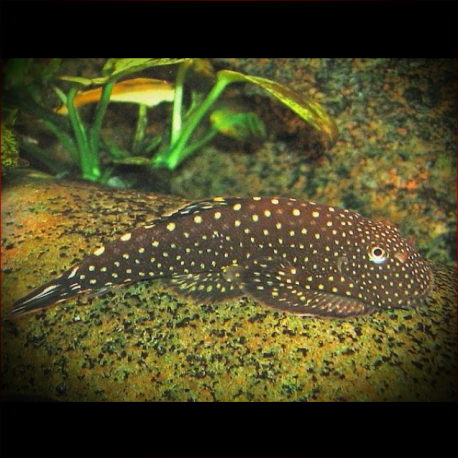More info
Datasheet
| Minimum Tank Size | 90 litres / 23.78 US gallons |
| Maximum Size | 8.5cm / 3.35inches |
| Temperature | 20°C / 68.00°F - 24°C / 75.20°F |
| Hardness | 1.01dgH / 18ppm - 12.05dgH / 215ppm |
| pH | 6.0-8.5 |
General Description
Gastromyzon monticola, commonly known as Monticola hill stream loach, is a small member of the family Gastromyzontidae, belonging to the order Cypriniformes. It possesses unique characteristics such as a flattened head and body, fused pelvic fins, and horizontally oriented paired fins, enabling it to cling tightly to solid surfaces in fast-flowing streams.
Aquarium Setup
For the successful maintenance of G. monticola, a mature aquarium with a minimum capacity of 90 liters is recommended. The setup should include clean, well-oxygenated water with a turnover rate of 10-15 times per hour. The tank should have a substrate of gravel or sand, with water-worn rocks, pebbles, and aged driftwood. Additionally, strong lighting to promote algae growth, open filter sponges for grazing, and suitable aquatic plants like Microsorum and Anubias species for cover are crucial. Stable water conditions with a pH range of 6.0-8.5, hardness of 18-215 ppm, and a temperature between 20-24°C are essential for the well-being of this species.
Behaviour
G. monticola is known for its peaceful nature but has territorial tendencies, with some individuals being more protective of their space than others. In the aquarium, it should be housed with small, non-aggressive tankmates that share its environmental requirements. The species might exhibit interesting behaviors, especially when kept in groups of four or more, showcasing their territorial side and feeding habits.
Feeding and Diet
In its natural habitat, G. monticola primarily feeds on benthic algae and associated microorganisms. In captivity, they accept a diet of high-quality dried foods, live or frozen bloodworms, and homemade gelatin-bound foods rich in vegetables and Spirulina. Maintaining a mature aquarium with ample algae-covered surfaces is crucial for their long-term health. If necessary, a separate tank with rocks to grow algae can be beneficial to supplement their diet.
Reproduction & Dimorphism
Breeding observations have been reported in aquaria, where successful spawning occurred with specific temperature and environment conditions. Although sexual dimorphism details are unreported for G. monticola, observations in related species suggest that adult females tend to be heavier-bodied and slightly larger than males.
Habitat and Distribution
Natively, *G. monticola is found in fast-flowing, shallow streams with clear, oxygen-rich water in regions of Borneo, including Marudu Bay and the Wariu River basin. The species is endemic to Borneo, with high levels of local species endemism noted in their habitats, which contain gravel, rocks, boulders, and rich biofilm. In the wild, G. monticola coexists with other fish species such as Garra borneensis and Nemacheilus olivaceus, among others.

